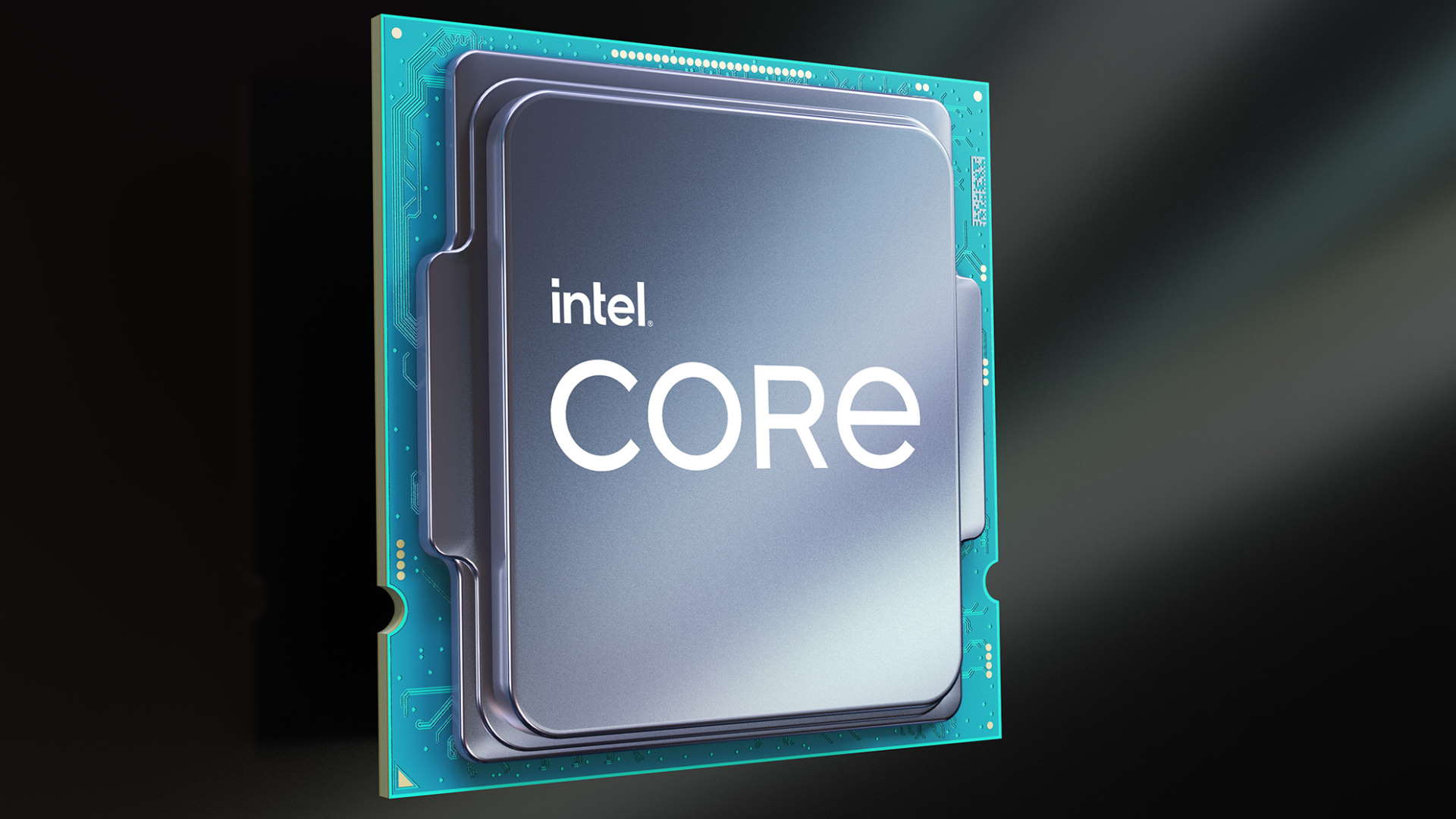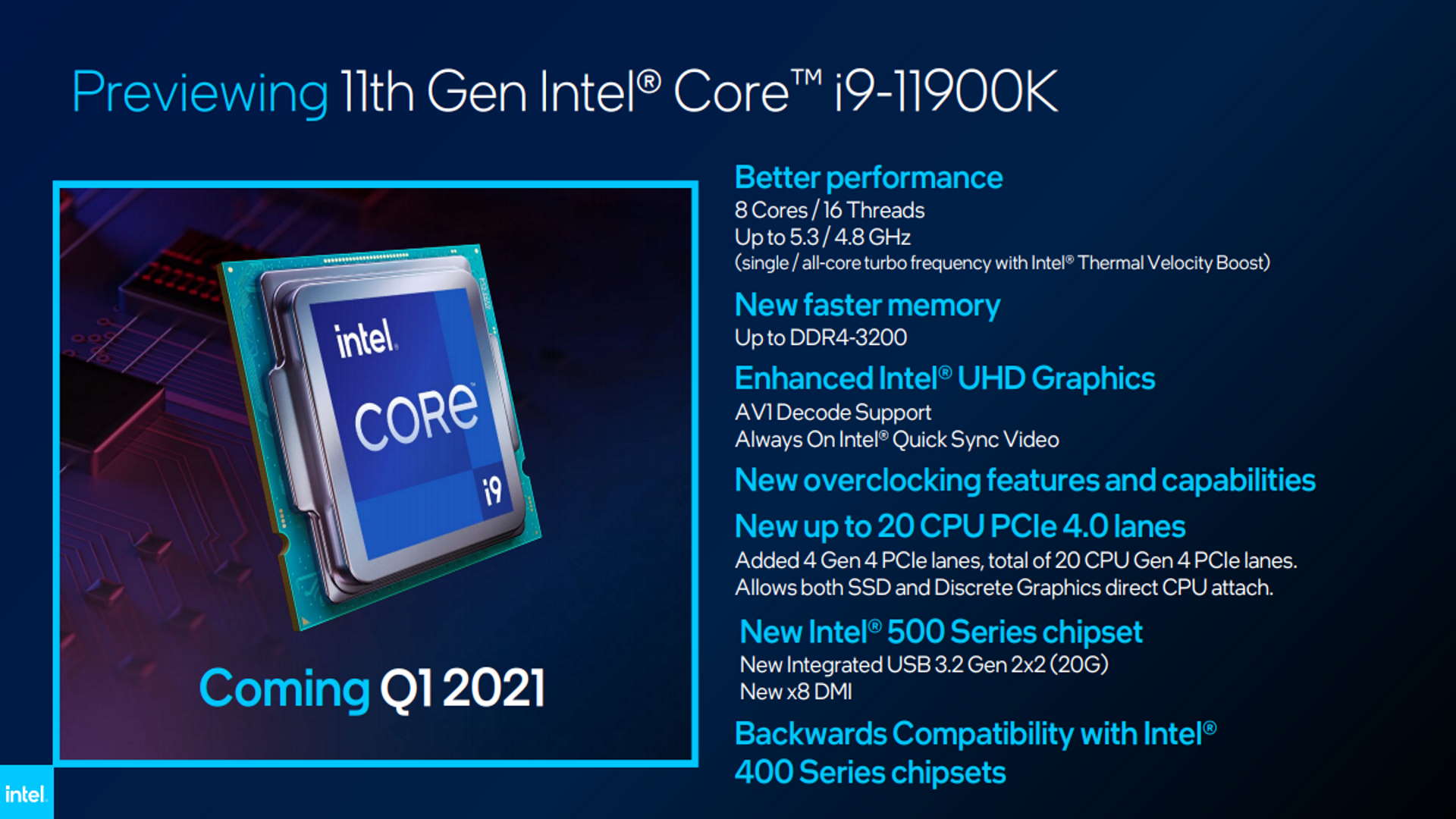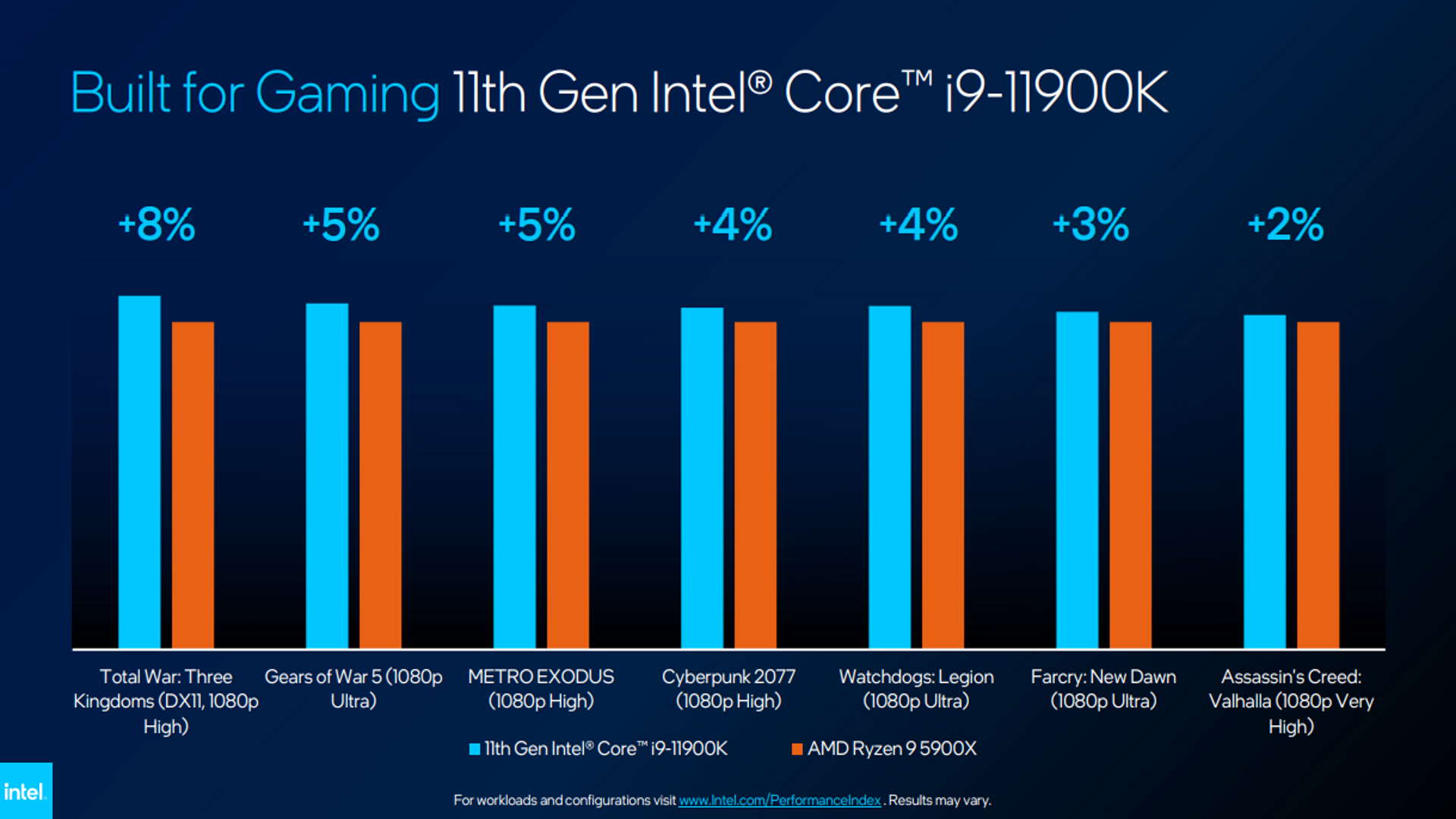Intel just announced Rocket Lake blasting off early 2021 with 19 percent IPC boost
Can Intel's mature 14nm manufacturing give it the edge in a world where availability is so tight?

The bullish Intel CES press conference has finally made official what has been leaking around the intermawebs for months. The 14nm backport of its 10nm CPU architecture will finally hit our desktops in the first quarter of this year and maybe, just maybe, using the mature 14nm process means we might actually be able to buy them.
Sporting the new Cypress Cove design, the 14nm Intel Rocket Lake chips use the same essential chip design found in the 10nm Ice Lake mobile processors of its 10th Gen range. We don't know exactly when the new chips are coming, but by the end of March marks the end of the quarter. So by then at the latest.
There was only one real 'launch' at Intel's press conference—the 35W Tiger Lake-H processors aiming to encourage a whole new world of Ultraportable gaming laptops—but Intel also previewed a suite of new mobile and desktop chips. The full-fat Tiger Lake-H mobile CPUs will power the gaming laptop refreshes of the spring/summer, and will likely arrive around May–June of this year, and Alder Lake will finally bring 10nm chips to the desktop in the second half of this year using an updated version of the SuperFin production process.
For us PC gamers, however, it's the preview of the soon-to-be-released Intel Rocket Lake chips that will surely spark the most interest. They're strange silicon beasts, and seemingly more of a reaction to both its own manufacturing failings and a very powerful new rival in AMD's Zen 3 powered CPUs.
Firstly, there's the matter of the Cypress Cove backport. It's become a necessary evil given the struggles Intel has had getting solid yield out of its 10nm manufacturing, especially at high core counts, and so means we have yet another 14nm desktop CPU from the blue team. That is a matter of consternation in many sectors, not least the company's investors, but for us PC gamers it's likely to mean Intel can once more lay claim to the fastest gaming processors around. And in the end, isn't that all that matters?
The up to 19 percent IPC increase is in line with what the Ice Lake chips offered over their 9th Gen brethren, and means that despite the fact the top chip, the Core i9 11900K, will be restricted to only eight cores, it will be demonstrably quicker in games than the Intel i9 10900K. Indeed, we were treated to a demo of Hitman 3 running side-by-side on Rocket Lake and Comet Lake systems and the frame rate numbers were very much in favour of the newer chip.
That core count shift does feel like a bit of an issue, however, and it's going to be tough for Intel to suggest shifting from ten cores with Comet Lake back to eight cores with Rocket Lake is anything other than a backwards step, no matter how much it wants to talk about a focus on maximum real-world performance. But it does make sense. In a pre-briefing with Intel's Brandt Guttridge ahead of the CES announcement, he admitted the step down was purely about the number of 14nm cores it could squeeze into the die given the advanced core architecture.
Keep up to date with the most important stories and the best deals, as picked by the PC Gamer team.

Personally I'd happily do away with the integrated graphics, even if Intel is dropping its new Xe GPU tech into the Rocket Lake chips. Whatever you want to say about 50 percent greater GPU performance from the silicon, we're going to be strapping discrete GPUs to these gaming chips, and if we could swap the processor graphics for another couple of Cypress Cove cores I'm sure we would.
Intel wouldn't respond to my question about whether that would have been possible. Maybe that's in the locker for a later release… but I doubt it.
But there is one benefit of the integrated CPU that we haven't seen before: Always On Quick Sync. Previously you had to switch on the processor graphics to enable Intel's dedicated media encoder/decoder silicon, but with Rocket Lake it's always available. That should mean it can take the load off the GPU, or the CPU itself, if you're gaming and recording/streaming at the same time.
Intel wouldn't go into detail about whether you can expect any sort of performance boost from Always On Quick Sync, but hopefully we'll hear more soon.

The new Intel Rocket Lake platform, with its 500-series motherboard chipset, offers full PCIe 4.0 support on the desktop for the first time, with a total of 20 lanes direct from the CPUs themselves. That means you can have a full x16 PCIe socket for your graphics card and x4 lanes for your shiny new PCIe 4.0 SSD.
Intel has also boosted the memory compatibility for Rocket Lake, taking it up from the DDR4-2933 of Comet Lake to a heady DDR4-3200 for the new platform. That should enable higher out-of-the-box memory configurations for your new Intel gaming rig.
But obviously, it's actual gaming performance that means the most to us and so Intel is providing some early numbers. These come from Intel's own tests, so take them with as much sodium chloride as you prefer until we get to the independent tests with our own setups. Still, across the board, Intel is claiming the performance win over AMD's Ryzen 9 5900X, if only by a tiny percentage.

It is also worth pointing out that these numbers are taken at 1080p, where the Nvidia RTX 3080 Intel used is going to be idly kicking its heels, and therefore this is likely as great as the performance delta will get. Running your $500 CPU and $700 GPU at anything above 1080p and you'll probably not see any difference in performance between AMD and Intel.
But pricing is going to be an interesting one for Rocket Lake. Can it really charge the same for an eight-core i9 11900K as it did for a ten-core i9 10900K? Especially when the 12-core Ryzen 9 5900X is an incredibly tempting chip... well, when it's available.
Which brings us to one last thing… if availability of its Rocket Lake chips can far outstrip AMD's stock of Zen 3 CPUs, for anything like a competitive price, then Intel will thank its own manufacturing facilities for giving it a bit of an edge in performance and actual retail visibility.

Dave has been gaming since the days of Zaxxon and Lady Bug on the Colecovision, and code books for the Commodore Vic 20 (Death Race 2000!). He built his first gaming PC at the tender age of 16, and finally finished bug-fixing the Cyrix-based system around a year later. When he dropped it out of the window. He first started writing for Official PlayStation Magazine and Xbox World many decades ago, then moved onto PC Format full-time, then PC Gamer, TechRadar, and T3 among others. Now he's back, writing about the nightmarish graphics card market, CPUs with more cores than sense, gaming laptops hotter than the sun, and SSDs more capacious than a Cybertruck.

